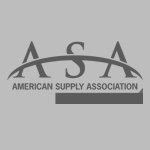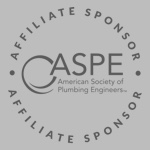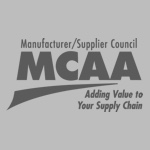Frequently Asked Questions
Below are some of the frequently asked questions and answers in regard to our products. If you need more information, or would like to speak to a specialist, please submit a request or see our submittal sheets.
-
From what elastomers are the sealing sleeves for the standard no-hub, wide body and Husky couplings made, and what is the highest water temperature that it will handle?
The gasket elastomer used in the manufacture of the no-hub, wide body and Husky sealing sleeves is neoprene in accordance with ASTM C 564. The properties of Neoprene make it suitable for moderate chemicals and acids, oil fats, greases, many solvents and air with hydrocarbons. Neoprene will not support combustion. The maximum temperature that neoprene will accommodate with continuous service is 203°F with a maximum intermittent temperature of 212°F. Neoprene is the only gasket elastomer offered with these couplings.
-
From what elastomer are the standard Ty-Seal and Ez-Tight gaskets made, and what is the highest water temperature they will handle? Are these gaskets available in other elastomers?
The elastomer used in the manufacture of the Ty-Seal and Ez-Tight gaskets is neoprene in accordance with ASTM C 564. The properties of neoprene make it suitable for moderate chemicals and acids, oil fats, greases, many solvents and air with hydrocarbons. Neoprene will not support combustion. The maximum temperature that neoprene will accommodate with continuous service is 203°F with a maximum intermittent temperature of 212°F. Neoprene is the only elastomer that Tyler Pipe offers with Ez-Tight gaskets. Tyler does offer the Ty-Seal gaskets in buna-N (also known as nitrile or NBR) which afford a 239°F continuous service temperature maximum. Buna-N gaskets are suitable for gasoline, diesel, petroleum products, hydrocarbons, mineral water and vegetable oils.
-
Are the couplings sold by Tyler Pipe for hubless applications UL or FM approved?
No plumbing code requires UL certification for couplings. All couplings manufactured by Tyler Pipe meet the performance requirements of FM 1680, all classes; however, they are not listed by Factory Mutual.
-
If there is no pressure rating for Ty-Seal/Ez-Tight gaskets or no-hub couplings, what will keep the joints from separating if a line backs up?
It is necessary to understand the difference between pressure and thrust. Thrust is equal to the hydrostatic pressure (4.3 psi at 10 ft. of head) multiplied by the area. As a cylinder is filled with water, thrust forces are exerted on all changes of direction, bends, branches, fittings with reductions and ends of runs. These locations must be restrained in order to prevent joint movement or separation. On a vertical run, the weight of the pipe helps to stabilize the joints on the run, but proper restraints are still necessary.
-
Are the couplings sold by Tyler Pipe for hubless applications fire protection rated?
No. Because the neoprene sleeve is completely protected by a non-flammable stainless steel shield, fire rating is not required.
-
Is adhesive lubricant required to join SV pipe and fittings with Ty-Seal or Ez-Tight gaskets?
Tyler Pipe requires the use of adhesive lubricants for sizes 5 inches diameter and larger. On sizes 2 inches through 4 inches, regular non-adhesive lubricant may be used.
-
Does Tyler Pipe sell an adhesive lubricant?
Yes.
-
Can I use an adhesive lubricant with no-hub couplings?
Tyler Pipe does not require or encourage the application of any type of lubricant with no-hub couplings. Although lubricants will have no adverse effect on cast iron pipe and fittings or the Neoprene sleeve of the coupling, some codes will not allow any lubricant to be applied to no-hub couplings. Before using any lubricant with no-hub or any other hubless coupling connector, check the applicable codes for restrictions.
-
What is the maximum deflection of an SV or no-hub joint?
Five degrees per joint is the maximum allowable deflection for SV and no-hub connections.
-
What coating does Tyler Pipe apply to its pipe and fittings?
Tyler Pipe applies a smooth even layer of bituminous petroleum asphalt coating through a dipping process for each piece of SV and NH pipe and all fittings. This coating affords a measure of corrosion protection as well adding cosmetic value.
-
What is Tyler Pipe's recommended procedure for hydrostatic testing of SV and NH pipe?
Ten feet of head for 15 minutes, properly restrained, as referenced in the CISPI handbook.
-
Can Tyler Pipe's hubless pipe, fittings and no-hub couplings be used below grade?
Yes. None of the model codes place any restriction(s) on the use of hubless pipe, fittings or couplings below grade. However, it is advised to first check with the local jurisdictional code before installation to ensure that no local restrictions have been placed on hubless below grade applications.


